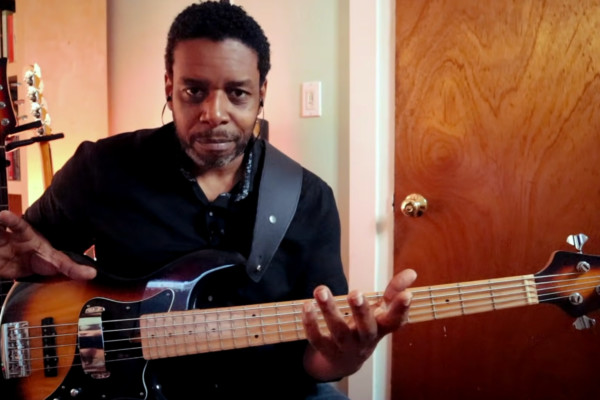More Approaches to Jazz Tunes
I’ve talked in the past about delving into a new tune using what I call “The Treatment.” It’s a flexible yet organized way to become more fluent on a tune, especially if it is new to you. Sometimes, however, we are looking to delve even more deeply into a tune, or perhaps we find ourselves falling into a musical rut. Same stock patterns, same bass lines. We want to do something new. Here are a few ideas to spark that creativity and get that brain flowing.
Walk on one string
Just pick one and go. It does a few interesting things. First it will illustrate immediately any weaknesses you may in your knowledge of the fingerboard. Secondly, it will likely force you to come up with new note choices. We sometimes find ourselves falling into stock patterns and this is one way to break out of them. Those patterns we might fall into so easily aren’t always so easy to navigate on just one string. Try a few choruses and see how you do. You can do this also on two and three strings. Try playing a few choruses on just the E and G strings and you’ll probably come up with some interesting stuff. As always, you want to keep the swing or groove just as solid.
Go up, then down… only.
Another way to break out of our usual patterns is to impose a directional limitation on our walking. Begin the tune and walk, making every successive note higher in pitch than the previous one, like an extended scale/arpeggio. Start going up and don’t go down until you reach the top of your range. When you reach the top, head downward until you reach the bottom. Use a minimum of repeated notes. Then repeat throughout the choruses.
If you do this, it will likely spark some new and interesting note choices as you head through the choruses. After you are comfortable starting at the bottom and going to the top, start at the top and go to the bottom. Then start in the middle, heading downward. Then start in the middle heading upward. You get the idea. Imposing an arbitrary limitation such as this can help force yourself out of your pitch and finger patterns and make you navigate your walking in a new way over a tune.
Sing the tune and play
Sing the melody and play the changes. Start simply by just playing root notes when the chords change. Then graduate to a 2-beat and finally walk while you sing the tune. This is a great way to really solidify your knowledge of a tune, as well as inform your pitch choices in your bass line. The benefit to our musical hearing and ear training is also substantial.
Take the tune around the circle of fifths
This is one of my favorites. It not only ensures that you rip the guts out of a tune but really helps with memorization. It also makes sure you are comfortable, both instrumentally and musically, in every key.
Play the melody, do “The Treatment,” Play “in 2”, walk and solo. Do it all in every key. It’s not always easy at first, but the benefits are enormous. You’ll never forget the tune, you’ll be a better isntrumentalist and you’ll be ready when a singer turns to you and says “Just Friends… my key is F#.”
I attended and viewed a few workshops where Ray Brown explicitly stated that a jazz bassist be able to play every tune they know in every key. It’s good advice and it’s a great path to mastery of the instrument, any tune and the musical language of jazz.
Can’t do this on “Giant Steps?” No problem. Start with blues and “rhythm changes.”
Dr. Donovan Stokes is on the faculty of Shenandoah University-Conservatory. Visit him online at www.donovanstokes.com and check out the Bass Coalition at www.basscoalition.com.




Great stuff..
thanks for the input!